News
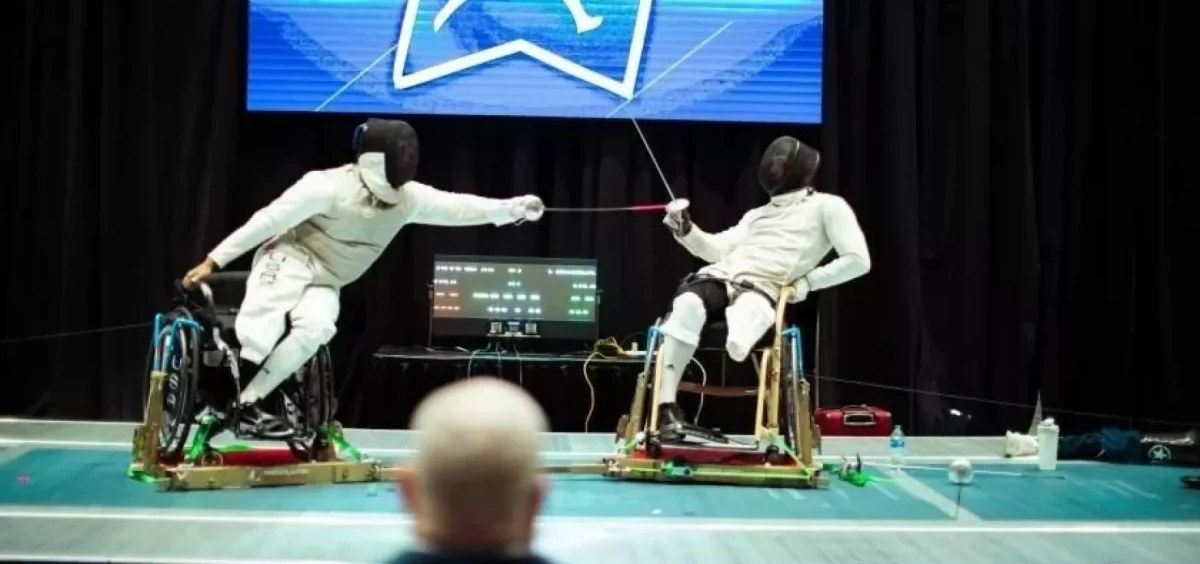
Meet Byron Branch, the Dayton police officer headed to the 2024 Paralympics for wheelchair fencing
By: Jason Reynolds | WYSO
Posted on:
DAYTON, Ohio (The Ohio Newsroom) — The 2024 Paris Paralympics start today and Dayton Police Officer Byron Branch will be participating.
Branch lost a leg in the line of duty back in 2016. Now, he’s headed to Paris to compete for gold.
On a Monday night, Branch was fencing in a converted warehouse, just north of Cincinnati. It’s called Salle du Lion, which is French for the “Room of the Lion.”
Branch has fenced for over 20 years, but he didn’t parafence until after he lost a leg. He’s found that distance is one of the big differences between able body and parafencing.
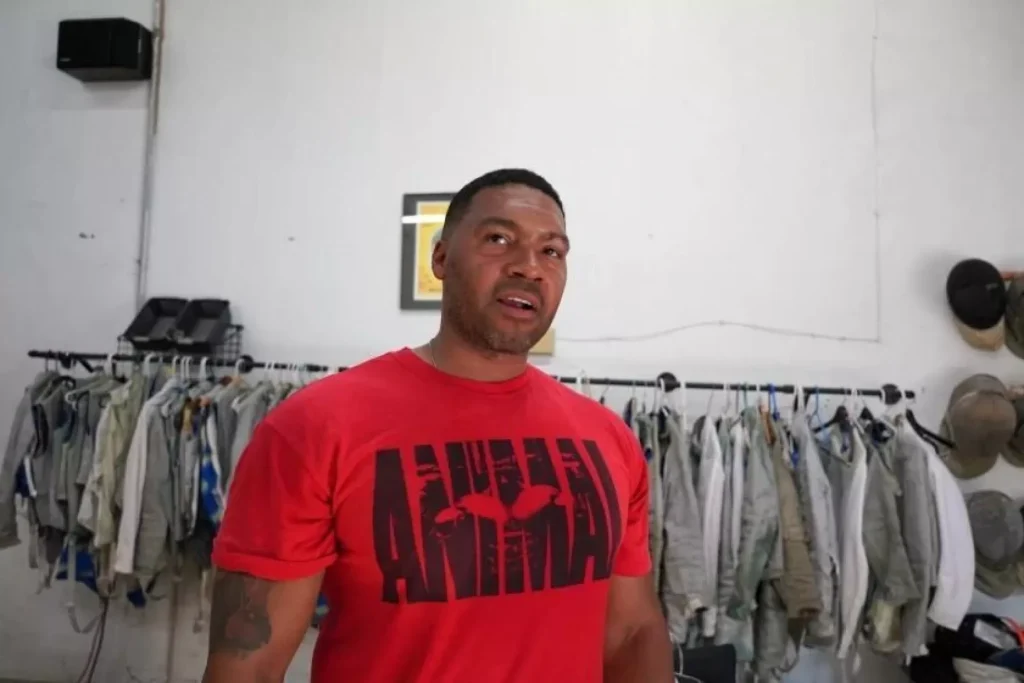
Less than a year into his career with the Dayton Police, Branch was in a life threatening accident. It was December, and there was a storm. Branch spotted accident on the highway. A car had rear-ended a big rig, and he stopped to help.
“When I pull up behind the semi, the truck driver comes out and I see him. I say, ‘hey, you need to come around to the other side of my car so I can talk to you.’ He said, ‘okay.’ And then I woke up in the hospital, and that’s… that’s all I remember about the accident,” Branch said.
A vehicle on the road had lost control, hit Branch’s cruiser, and pinned him between cars.
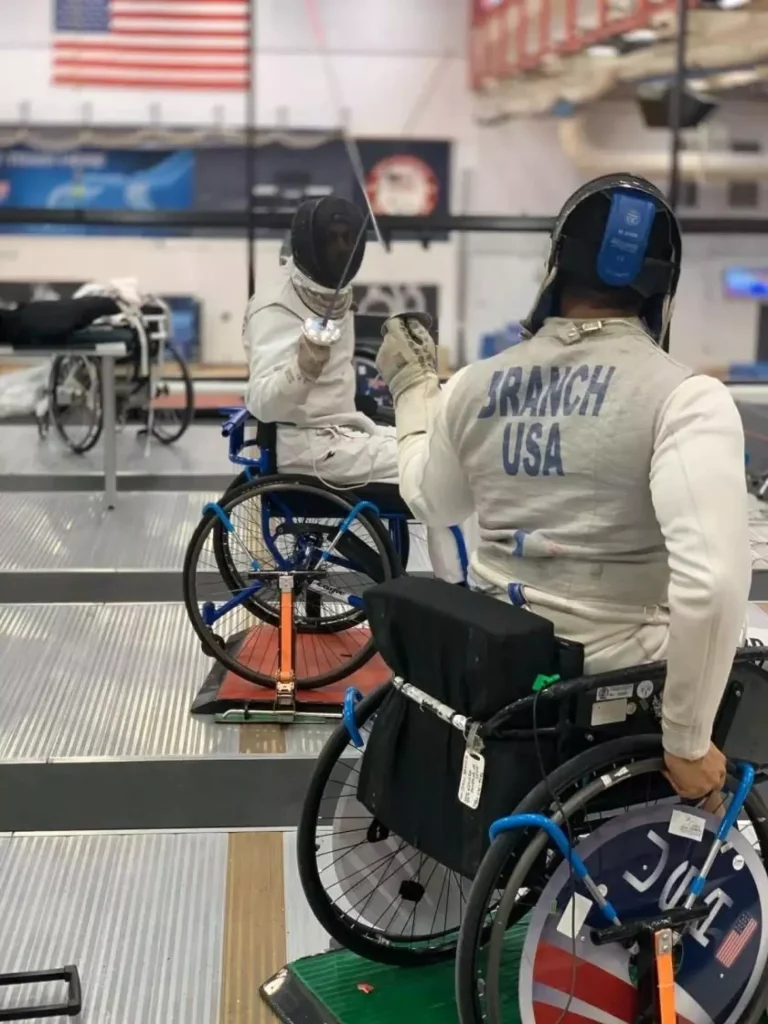
“I got back to my house on Dec. 27,” Branch said. “I got my prosthetic May 25, and then I was back in the office on light duty. But I was working with my physical therapist, learning how to walk. And I was like, ‘hey, there’s going to be times when I’m going to get into fights with people on the street. I need to know how my body’s going to react to it.’ So, one of our defensive tactics guys came in. I thought he was going to come in one time, and he ended up coming in twice a week for three months and just beating me up. That was actually really good because it taught me a lot of different things. I got a lot of good training from him.”
There are some challenges to using a prosthetic in the field, like going up and down stairs, but he knows how to handle himself.
“I don’t run after anybody,” he said. “If I’m going into a house and I know somebody’s got a warrant, I’ll position myself in front of a door as the only exit. So they’ve got to go through me when the bad news comes out.”
While he might not run at work, Branch is quick to jump in and help teach young fencers when he’s off duty.
He directs the students and fences against them, using his prosthetic leg.
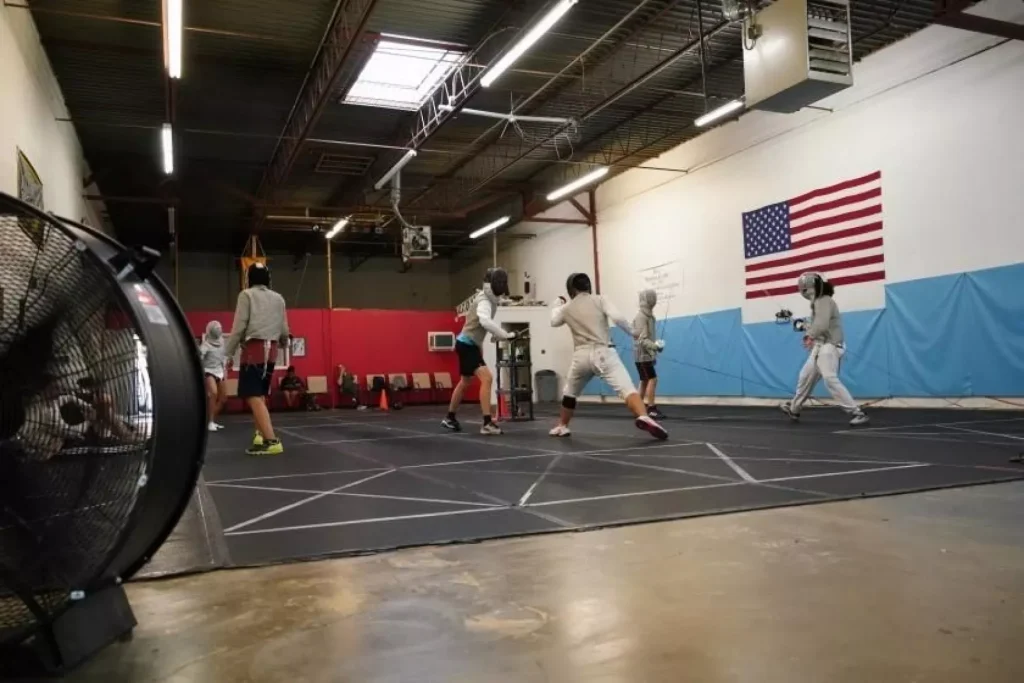
“I’ve known Byron since I was a little kid,” Howell said. “So, he’s known me long enough to know when I was annoying and a little brat, and he’s got this way of making fencing seem easy.”
And Howell says he’s not surprised to see Branch do so well.
“He was a great able bodied fencer for a long time. So, him switching over to the chair, I’m sure it was an adjustment, especially the distance and the speed at which it moves. But Byron’s a great fencer, so I knew he was not going to have a problem and definitely dominate the competition.”
London Waller is one of the young fencers training with Howell. She’s 15.
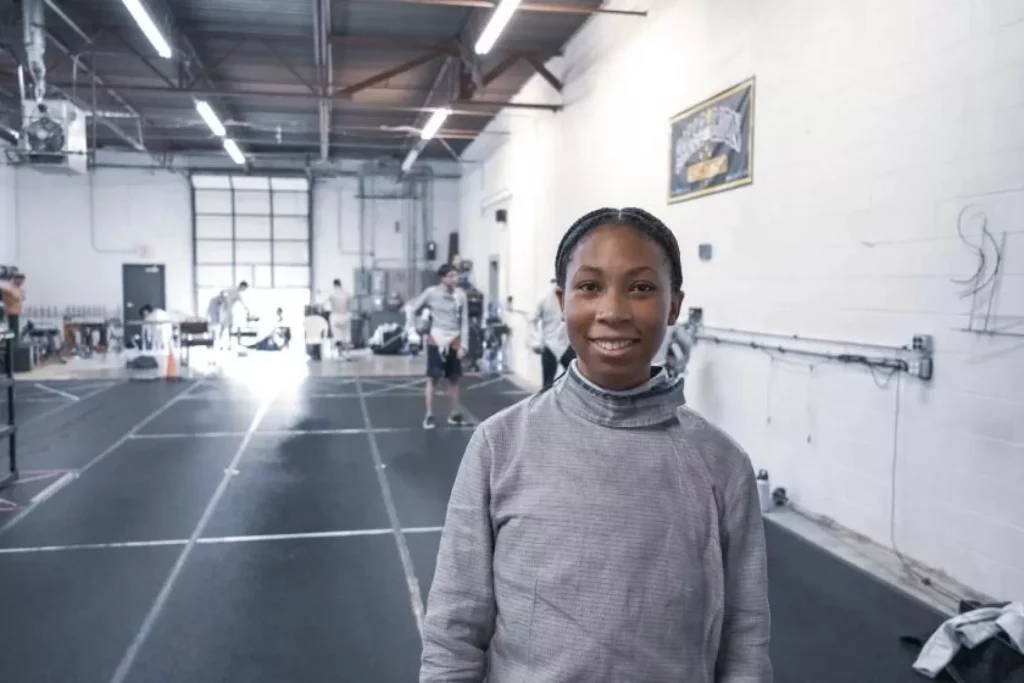
Waller’s mom, Casandra Strudwick, says the sport has taught her daughter some good life lessons.
“I think she’s getting used to how to lose, recover, and come back harder,” Strudwick said.
Strudwick, who has MS, had a chance to try parafencing.
“When we went to one of the national tournaments, I tried to do parafencing with the U.S. team,” she said. “And it felt like before I was even thinking about picking up my blade, they’d already touched me.”
Strudwick said she was also impressed to see women in their 70s and 80s competing in able body fencing, and the sport’s inclusion inspires her.
You can see Byron Branch and the U.S. Paralympic Fencing Team compete from Sep. 3 to Sept. 7.

